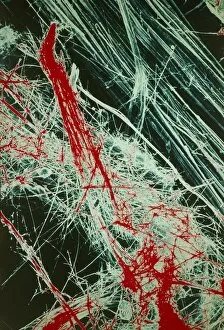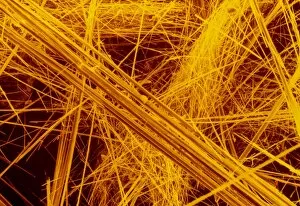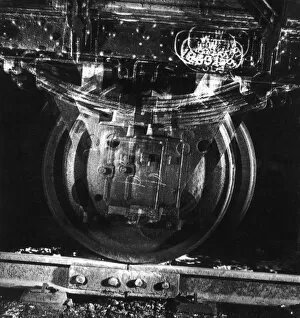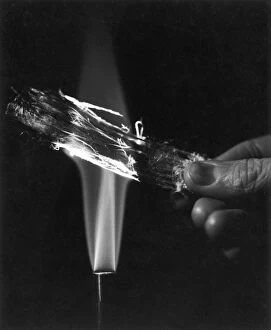Asbestos Collection (page 3)
Asbestos, a once widely used material, has left an indelible mark on various aspects of our history
For sale as Licensed Images
Choose your image, Select your licence and Download the media
Asbestos, a once widely used material, has left an indelible mark on various aspects of our history. From the mixing of treated asbestos fibers using a Heath Robinson machine to the invention of a patent double action grinder for asbestos by Heath Robinson himself, its presence was undeniable. Different types were discovered and utilized across the globe. Crysotile asbestos, found in abundance, became popular due to its heat-resistant properties. Tremolite asbestos from France also made its way into numerous industries. The Asbestos Mines at Pano Amiantos in Cyprus served as a significant source for this mineral during its peak usage. The extraction process involved meticulous labor and advanced machinery. Oxy-acetylene welding techniques often employed asbestos materials due to their ability to withstand high temperatures and provide insulation against heat transfer. However, with time came awareness about the health hazards associated with exposure to these fibrous minerals. A false-colored scanning electron microscope image revealed crocidolite fibers - one type of deadly blue asbestos - magnifying concerns surrounding safety precautions. Promotional advertisements played their part in promoting products containing or utilizing asbestos. Turner's Asbestos Cement Advertisement showcased the durability and versatility of their cement products infused with this mineral. Elo Asbestos Panels Advertisement emphasized fire resistance as a key selling point. Eternit Asbestos-Cement Roofing Material Factory stood tall in Barranquilla during the 1940s, producing roofing materials that incorporated this controversial substance into their composition. Beyond its industrial applications, minerals like kyanite coexisted alongside asbestos crystals within geological formations worldwide – showcasing nature's diverse offerings while reminding us of potential dangers lurking beneath Earth's surface. During World War II, protective suits made from American-produced asbestos provided defense against hazardous conditions faced by soldiers on various fronts – highlighting both innovation and risks associated with wartime technologies. While we now understand the detrimental effects caused by prolonged exposure to airborne particles released from disturbed asbestos, it is crucial to reflect on its historical significance and the lessons learned.





